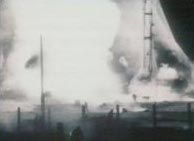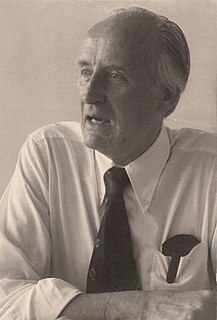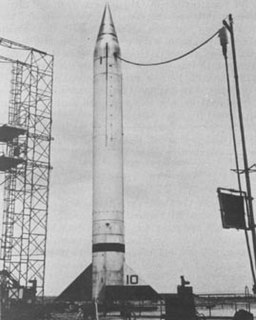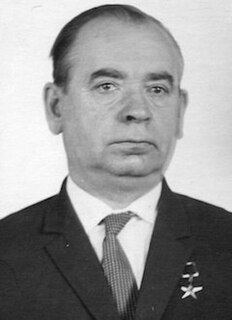Operators
 Soviet Union
Soviet Union - The Strategic Rocket Forces were to operate the RT-1, but the program was cancelled before service entry.
| RT-1 | |
|---|---|
| Type | Intercontinental ballistic missile |
| Place of origin | USSR |
| Specifications | |
| Mass | 35,500 kg (78,300 lb) |
| Length | 18.3 m (60 ft) |
| Diameter | 2 m (6 ft 7 in) |
| Warhead | 600–1000 kt nuclear warhead |
The RT-1 was an early intercontinental ballistic missile design that was tested but not deployed by the Soviet Union during the Cold War. It was not assigned a NATO reporting name, but did carry the GRAU index 8K95. [1]
Development was led by OKB-1 (S. P. Korolev), [1] and a total of nine flight tests were carried out, of which the two first failed, with the last launch taking place in June 1963. [2] Two versions of the RT-1 were developed, with the first failing its first flight, but succeeding in its second in 1961. A second version was tested in 1965 with three flights, of which two failed. The RT-1 program was cancelled before any service.[ citation needed ]

The R-7 Semyorka, officially the GRAU index 8K71, was a Soviet missile developed during the Cold War, and the world's first intercontinental ballistic missile. The R-7 made 28 launches between 1957 and 1961, but was never deployed operationally. A derivative, the R-7A, was deployed from 1959 to 1968. To the West it was unknown until its launch. In modified form, it launched Sputnik 1, the first artificial satellite, into orbit, and became the basis for the R-7 family which includes Sputnik, Luna, Molniya, Vostok, and Voskhod space launchers, as well as later Soyuz variants.

Voskhod 1 was the seventh crewed Soviet space flight. In October 1964 it achieved a number of "firsts" in the history of crewed spaceflight, being the first space flight to carry more than one crewman into orbit, the first flight without the use of spacesuits, and the first to carry either an engineer or a physician into outer space. It also set a crewed spacecraft altitude record of 336 km (209 mi).

The Nedelin catastrophe or Nedelin disaster was a launch pad accident that occurred on 24 October 1960 at Baikonur test range, during the development of the Soviet R-16 ICBM. As a prototype of the missile was being prepared for a test flight, an explosion occurred when the second stage engine ignited accidentally, killing an unknown number of military and technical personnel working on the preparations. Despite the magnitude of the disaster, news of it was suppressed for many years and the Soviet government did not acknowledge the event until 1989. The disaster is named after Chief marshal of Artillery Mitrofan Ivanovich Nedelin, who was killed in the explosion. As commanding officer of the Soviet Union's Strategic Rocket Forces, Nedelin was the head of the R-16 development program.

The Soviet space program was the national space program of the Union of Soviet Socialist Republics (USSR), conducted in competition with its Cold War adversary the United States, known as the Space Race from the mid-1950s until the dissolution of the Soviet Union in 1991. It consisted of the development of expendable launch vehicles, uncrewed artificial satellites starting in 1953, and several human spaceflight programs.

The RT-2PM Topol is a mobile intercontinental ballistic missile designed in the Soviet Union and in service with Russia's Strategic Missile Troops. By the early 2020s, all SS-25 ICBMs will be replaced by versions of Topol-M.

Kapustin Yar is a Russian rocket launch and development site in Astrakhan Oblast, about 100km east of Volgograd. It was established by the Soviet Union on 13 May 1946 and in the beginning used technology, material and scientific support from defeated Germany. Numerous launches of test rockets for the Russian military were carried out at the site, as well as satellite and sounding rocket launches. The town of Znamensk and Kapustin Yar were built nearby to serve the missile test range.

Space Race is a BBC docudrama series first shown in Britain on BBC2 between 14 September and 5 October 2005, chronicling the major events and characters in the American/Soviet space race up to the first landing of a man on the Moon. It focuses on Sergei Korolev, the Soviet chief rocket designer, and Wernher von Braun, his American counterpart. The series was a joint effort between British, German, American and Russian production teams.

Helmut Gröttrup was a German engineer, rocket scientist and inventor of the smart card. During World War II, he worked in the German V-2 rocket program under Wernher von Braun. From 1946 to 1953 he headed a group of 170 German scientists who were forced to work for the Soviet rocketry program under Sergei Korolev. After returning to West Germany in December 1953, he developed data processing systems and contributed to early commercial applications of computer science. In 1967 Gröttrup invented the basic principles of the smart card as a forgery-proof "key" for secure identification and access control.

The Bereznyak-Isayev BI-1 was a Soviet short-range rocket powered interceptor developed during the Second World War.

Spaceflight as a practical endeavor began during World War II with the development of operational liquid fueled rockets. This led to a flourishing of missile designs setting the stage for the exploration of space. Beginning life as a weapon, the V-2 was impressed into peaceful service at America's White Sands Missile Range during the late 1940s. By 1950, the United States Navy had evolved the design into the Viking capable of more than 100 miles (160 km) in altitude. The Soviet Union developed a virtual copy of the V-2 called the R-1, which first flew in 1948, and by 1950, its successor, the R-2, was in development. The small American WAC Corporal rocket was evolved into the Aerobee sounding rocket, a space science workhorse of the late 1940s.

Boris Yevseyevich Chertok was a Russian electrical engineer and the control systems designer in the Soviet Union's space program, and later found employment in Roscosmos,

The year 1954 saw the conception of Project Orbiter, the first practicable satellite launching project, utilizing the Redstone SRBM. Rockoons, Viking, and Aerobee, as well as derivatives of the Soviet R-1 missile, continued to return scientific data from beyond the 100 kilometres (62 mi) boundary of space. The French also launched their first sounding rocket into space, the Véronique-NA. The United States prioritized the development of its Atlas ICBM while the Soviet Union authorized the draft proposal for the R-7 Semyorka, its first ICBM.

The year 1952 was largely one of development and testing for the United States and the Soviet Union. Nevertheless, all branches of the United States, often in partnership with civilian organizations, continued its program of Aerobee sounding rocket research beyond the 100 kilometres (62 mi) boundary of space, and the University of Iowa launched its first series of rockoon flights, demonstrating the validity of the balloon-launched rocket. The launch of Viking 9 at the end of the year represented the pinnacle of contemporary operational rocket design.

The year 1951 saw the Soviet Union definitively advancing beyond the V-2 with the deployment of the R-2 rocket, which could carry a ton of explosives twice as far as the German rocket. The USSR also launched its first series of biomedical tests at the 100 kilometres (62 mi) boundary of space. While the United States did not field any new boosters during the year, both the U.S.A.F. and the U.S. Army began their own next-generation ballistic missile projects, Atlas for the former and Redstone for the latter. Meanwhile, the Navy fired its Viking rocket to a record-breaking 136 miles (219 km) in August 1951. Throughout the year, several American agencies launched more than a dozen scientific sounding rocket flights between them.

The year 1953 saw the rockoon joining the Aerobee sounding rocket beyond the 100 kilometres (62 mi) boundary of space. Both the United States and the Union of Soviet Socialist Republics continued their development of ballistic missiles, the United States Air Force with its Atlas ICBM, the United States Army with its Redstone SRBM, the Soviet OKB-1 with its R-5 IRBM, and Factory 586 with its R-12 IRBM.
The Military-Industrial Commission of the USSR or VPK commission under the Soviet Council of Ministers from 1957 to 1991. The VPK was a Commission of the Presidium of the Council of Ministers, and a deputy chairman of the Council headed it. The Soviet VPK's primary function was to facilitate plan fulfillment by easing bottlenecks, enforcing inter-ministerial cooperation, and overseeing the availability of resources.

Leonid Alexandrovich Voskresensky was a Soviet rocket engineer and long-time associate of Chief Designer Sergei Korolev. He served as launch director for Sputnik and for the first manned space flight, Vostok 1. The lunar crater Voskresenskiy is named in his honor.

Soviet rocketry spanned the entire history of the Soviet Union (1922–1991). Rocket scientists and engineers contributed to the development of rocket and jet engine propulsion systems, which were first used for artillery and later for fighter aircraft, bombers, ballistic missiles, and space exploration. Progress was greatly augmented by the reverse engineering of German technology captured by westward-moving troops during the final days of World War II and the immediate period following.

On March 27, 1968, Yuri Gagarin, the first man to go into space, died together with pilot Vladimir Seryogin during a routine training flight, after the MiG-15 jet fighter they were flying crashed near Novosyolovo in the Soviet Union.